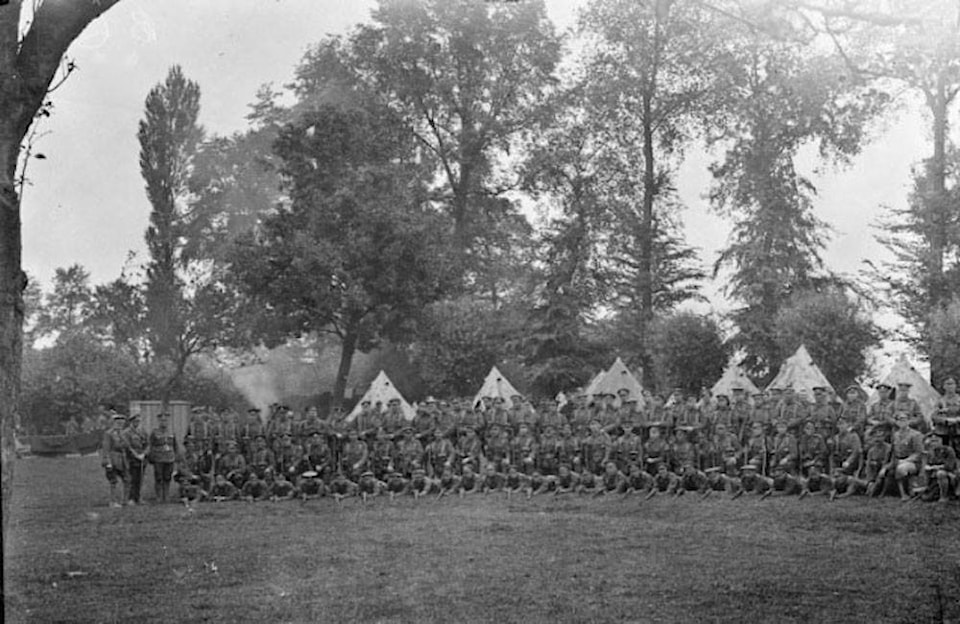A Vancouver Island soldier who fell in France during the First World War has been identified.
Remains discovered near the village of Vendin-le-Vieil in July 2017 have now been identified as George Alfred Newburn, a Private in the 7th Canadian Infantry Battalion, Canadian Expeditionary Force.
ALSO READ: Memories of an uncle and Remembrance Day
Newburn enlisted in Esquimalt, at the age of 16 and died on Aug. 15, 1917, at the age of 18, in the Battle of Hill 70. He had emigrated to Canada as a child from London, England.
The Battle of Hill 70 took place August 15 to 25, 1917 and was the first major action fought by the Canadian Corps under a Canadian commander in the First World War. Approximately 2,100 Canadians gave their lives in the battle, more than 1,300 of whom have no known grave. The top of Hill 70 remained under Allied control until the end of the war.
In July 2017, human remains with other First World War artefacts were discovered near rue Léon Droux, Vendin-le-Vieil, France. The Commonwealth War Graves Commission was notified, and with the support of French regional authorities, took possession of the remains and artefacts, keeping them at a facility in Beaurains, France. The remains were officially identified as those of Private George Alfred Newburn on February 26, 2019.
Newburn will be laid to rest by his regiment, in the presence of family and Government of Canada reps, at the Commonwealth War Graves Commission’s Loos British Cemetery outside Loos-en-Gohelle, France, on June 12 at 1:30 p.m. (Central European Time).
ALSO READ: Drug-driver vehicle hit and run in Brentwood Bay
Due to the heavy casualties suffered in the Great War, The Department of National Defence Casualty Identification Program identifies unknown Canadian soldiers so they may be buried with their name by their regiment. The organization say the program offers an opportunity for all Canadians to reflect upon the experiences of those men and women who made the died fighting for their country.
“Honouring the service of our fallen members is a value our Canadian Armed Forces hold dear. In June, we’ll pay tribute to Private George Alfred Newburn as we will lay him to rest in the place he helped to liberate. Let us never forget the courage of our Canadian battalions during the Battle of Hill 70, and forever honour their service,” said Harjit S. Sajjan, Minister of National Defence.
ALSO READ: Radio Host Erin Davis pens Mourning Has Broken following death of her daughter
Lawrence MacAulay, Minister of Veterans Affairs and Associate Minister of National Defence added, “We must always recognize those Canadians who made the ultimate sacrifice. This is why we honour Private George Alfred Newburn for his commitment and service to Canada. He is among the more than 66,000 brave men and women who gave their lives during the First World War. Their sacrifice allows us to live in peace and security today. Lest we forget.”
The Casualty Identification Program, which includes assistance from the Canadian Forces Forensic Odontology Response Team and the Canadian Museum of History, confirmed the identity of Newburn using historical, genealogical, anthropological, archaeological, and DNA sources.
nick.murray@peninsulanewsreview.com
Like us on Facebook and follow us on Twitter
